Shooting underwater brings an element of danger and excitement to the screen - but creates complications for production teams.
Archimedes had his eureka moment in the bath. For the BBC’s Clare Pizey, her moment of inspiration came when she was standing next to a much larger body of water.
The head of factual entertainment was desperately looking for “unmissable” content for this year’s Sport Relief fundraising event; the struggle was to come up with an alternative take on Strictly Come Dancing that would create a “water-cooler” moment.
“Strictly has been fantastic over the years but it’s already got celebrities, so it can be hard to make it stand out,” says Pizey.
It was during a BBC Academy Visionary Leadership course tour of Pinewood and the facility’s underwater stage that she came up with the idea of shooting Strictly underwater.
After receiving assurances that it could be done - for a price - a production team was assembled and former BBC cameraman-turned-underwater director of photography Mike Valentine was recruited.
“The underwater world has high production values,” explains Valentine, who is used to dealing with submerged stars, having worked on the Bourne franchise, a host of Bond films and TV series including Doctor Who, EastEnders and New Tricks.
“It’s my job to make the underwater world look exciting, dangerous and real.”
Harry Judd, the winner of the 2011 series of Strictly, together with runner-up Chelsee Healey and their professional dance partners, swapped the confines of Television Centre’s TC1 for the depths of Pinewood’s U stage.
Over the course of a week, a 20 ft stage was built, complete with lighting rig and speakers, culminating in a day spent shooting the dance-off.
The kit Valentine shot Strictly Underwater with an Arri Alexa Plus, which he had started using just over six months previously. Since purchasing a Plus, he has also bought an Alexa Studio.
“It’s not just the image quality but the ethos of the camera system that appeals to me. I don’t dislike the Red but the camera was prone to overheating and it uses more power than the Alexa.
“The kit reflects you and is an extension of you so it’s got to work. As an end user, I have to be able to offer a reliable solution. If you are making short films, the Red is fine, but this is showbusiness, and time is the most valuable asset.
“No one can afford to have actors standing around when they shouldn’t be because the kit isn’t working.”
Valentine says that with the camera’s LUT, he is able to dial in the look he wants so that the production team on the set can see the effect he is striving for.
The codex recorder for the Alexa also fits in the camera’s underwater housing so he can record RAW footage at up to 60fps.
“Together with the workflow of the Arri, I like having the support of an established company. When I was filming 20,000 Leagues Under The Sea with the Arri 35-3, there was a fire in the underwater housing, but Arri managed to get me a new camera within 24 hours.”
Valentine designed and built the underwater camera housing he uses, which can accommodate an Arri 435, Alexa or a Red camera.
“It’s essential to be able to do everything underwater that you can do on the surface, and it must be easy to move the camera through the water,” he says.
“By using a digital cable from the surface, the focus puller can control the aperture and focus. The video output means footage can be viewed on the surface and we can also run underwater playback so the actors can see the take without going up to the surface.”
Valentine compares working underwater to shooting in a smoke-filled room.
“You have to get in closer to the subject and we use a wider-angle lens than on the surface. The optical viewing system is really important, and I use a dome port to remove the distortion of a wide-angle lens.
“For Strictly, the lenses I used were Zeiss Ultraprimes. They have a very slight amount of contrast but that helps to counteract the softness of shooting underwater. When you shoot underwater, red is the first colour to be absorbed, so to stop actors looking drowned and washed out, you have to light underwater to replace the lost colour.”
As well as Kino Flo lights adapted for underwater use, six computer-controlled Mac lights were positioned above the water tank to help give Strictly Underwater a lightentertainment look.
“It was the first time I’d used them. They allow you to change the colour and angle of the lights, and you can set up various special effects and program them to interact with the soundtrack,” says Valentine.
Searching for Squid
When natural history production company Ammonite went looking for a giant squid for National Geographic, it designed its own camera to capture footage from the deep-sea search.
The Colour Starlight Camera, which works at the equivalent of 2 million ASA, only has two colour channels - blue and red - with the green portion of the spectrum split between the blue and red channels.
Ammonite has been working with its own design of image intensified, monochrome Starlight cameras for almost 20 years, having used them to shoot Crossroads Of Nancite (BBC, 1995) and Creatures Of The Black Lagoon (Anglia, 1999).
But Hunt For The Giant Squid was the first time the Bristol-based company had the resources and the reason to build a colour version.
Naturalist and wildlife film-maker - and Ammonite managing director - Martin Dohrn describes shooting 500m underwater as “enormously difficult”.
He says: “It was like looking for a needle in a haystack, so without the ability to react to things we would have just got endless footage of nothingness.
“We needed live viewing but in order to get an HD signal over distance, we needed to use a fibreoptic cable to connect the camera with the surface.”
The glass housing for the camera is ground out of glass and cost “thousands”.
“We had three housings made: two for the Starlight cameras and one for the Colour Starlight,” says Dohrn. “We also had to engineer a craft to hold the thing, and it had to glide and keep the camera stable and not respond to cables being yanked as the boat on the surface rolled.”
Fix it in post
Each channel of the colour version of the Starlight camera is treatedas a separate monochrome layer for noise reduction, before the layers are combined, when another level of noise reduction takes place.
“For the colour and monochrome Starlight cameras, we use combinations of layering, compositing and off-the-shelf noise-reduction software, depending on the shot,” says Dohrn.
Ammonite uses Boris Effects, Motion, plug-ins for Final Cut Pro and, on occasion, footage is exported to Adobe Photoshop.
“It all depends on the shot itself,” says Dohrn. “There doesn’t seem to be a single solution. The layering is simple but adds motion blur, and the noise-reduction software requires huge processing times and can make images look like plastic if it is over-used, so we use them both in varying degrees.”
This article was taken from the March/April issue of Broadcast TECH. Click here for the digital edition.


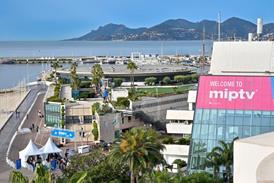









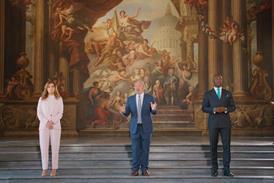
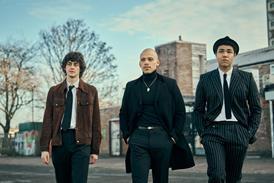
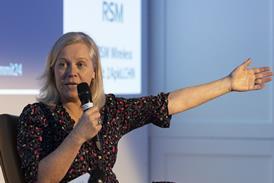

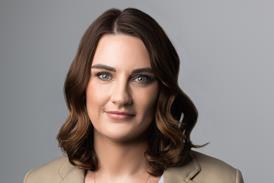
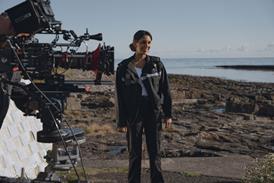







No comments yet